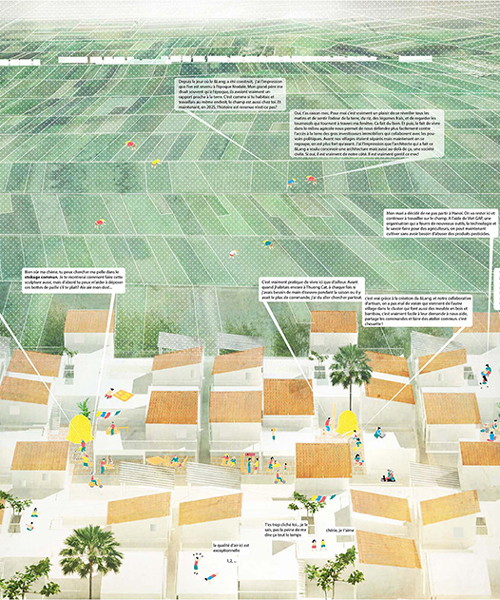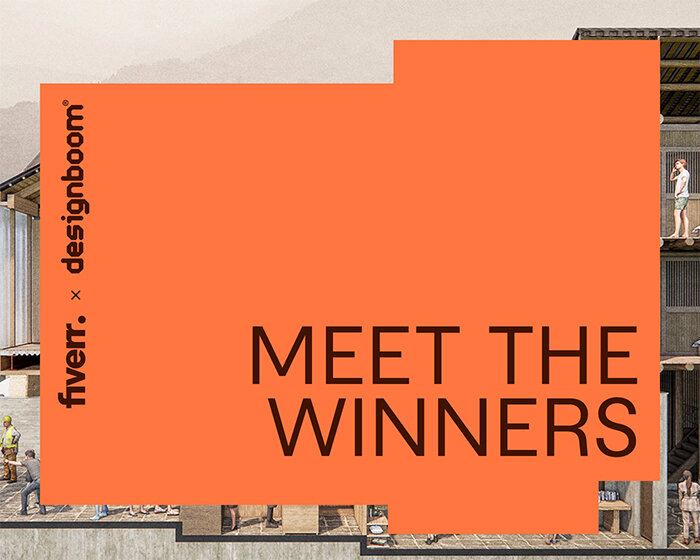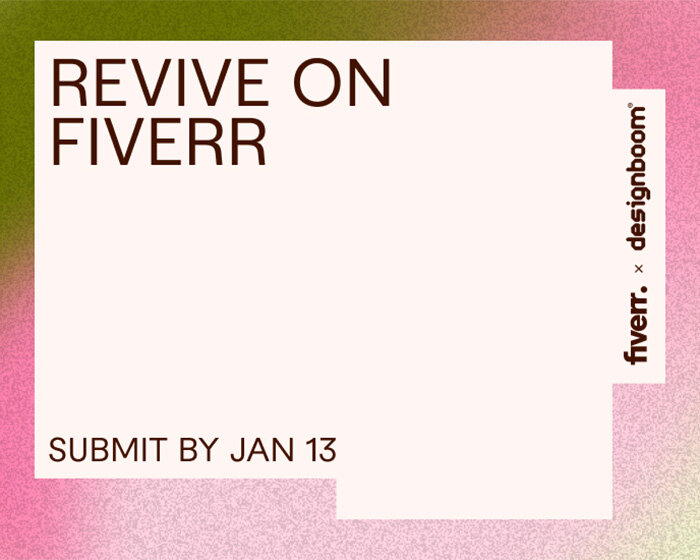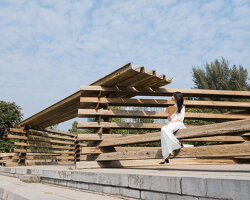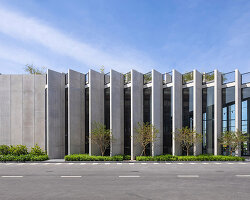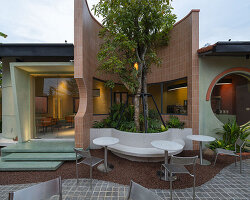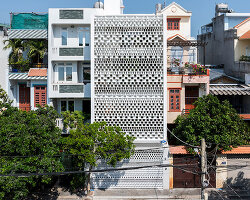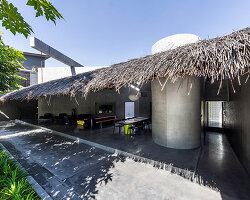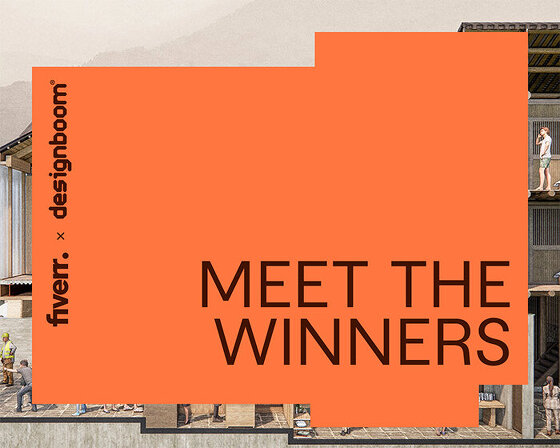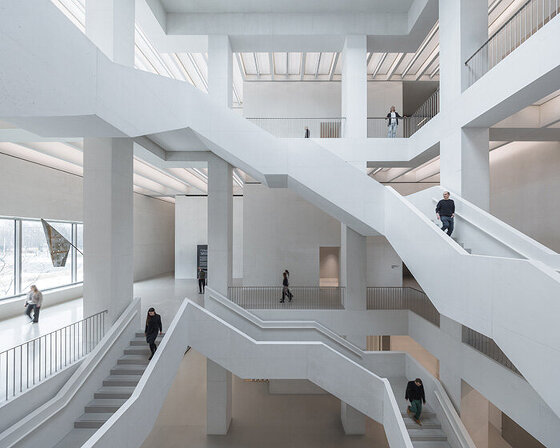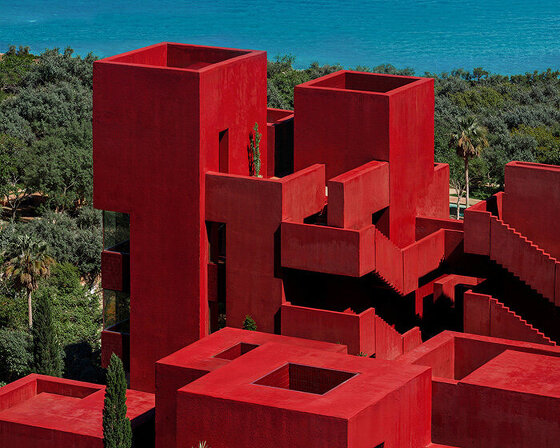in the next decade, hanoi and its regions are on the way to becoming the next mega-city of southeast asia. despite the economic growth and perspective of future development, the metropolitan city of hanoi is suffering from multiple issues — overpopulation due to urbanization, the disappearance of crafts villages due to de-urbanization, food security due to agricultural land speculation, environmental disaster due to a political lullaby and the lack of trust and human rights as a direct consequence of a political corruption.
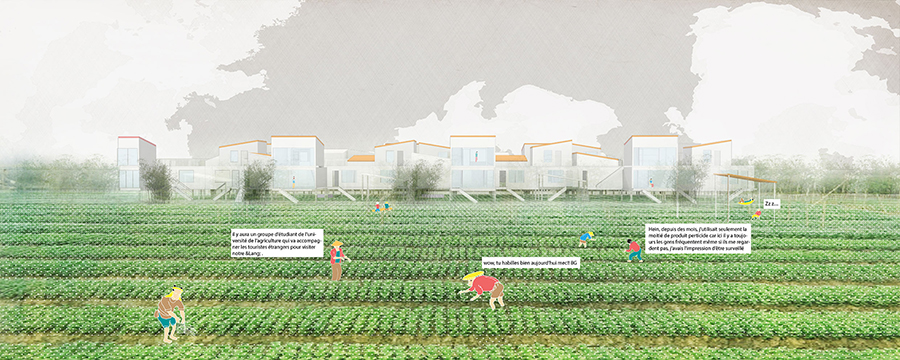
view from the agricultural field
parisian based architect mai hung-trung has proposed the urban strategy ‘& Lang;’ which focuses on two main objectives. first of all, the project wants to preserve a reliable food resource to supply the urban market and keep developing the metropolitan. furthermore, it intends to cope with the inevitable growth of the hanoi metropolis, as well as the preservation of soil and agricultural.
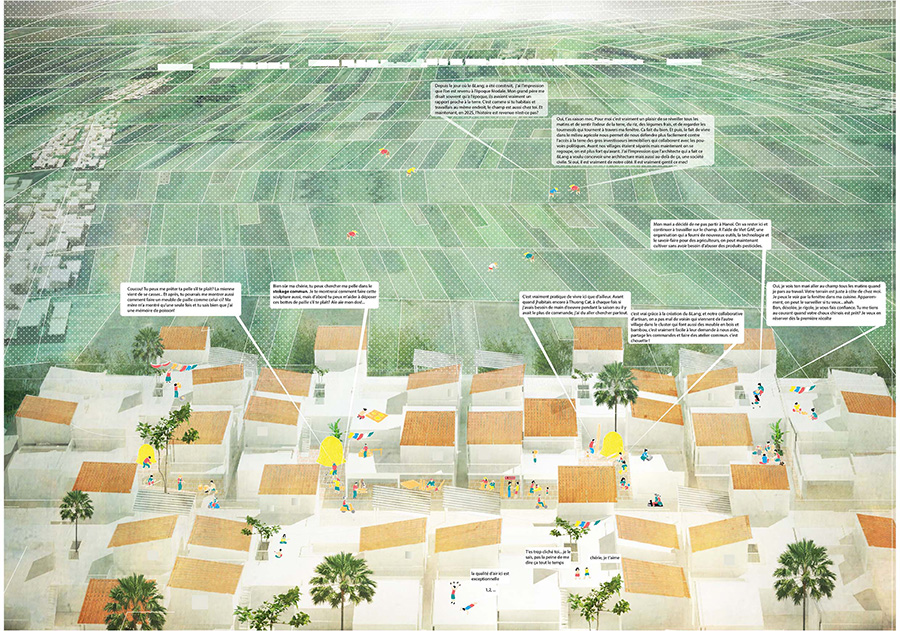
bird view of the new village cluster
from a political point of view, mai hung-trung’s ‘& Lang;’ will be a hypothesis of spatial realization of a civil society platform. it consists mainly of the armature which is a series of interventions follows an arc by connecting the hearts of existing villages. by exploiting empty spaces in the villages, the project intends to reuse them as commonplaces among the villagers. these are shared workshops, storage, collective workspaces, thus it will promote exchanges between these villages in terms of know-how, the share of raw materials and strengthen rural identity while developing tourism.
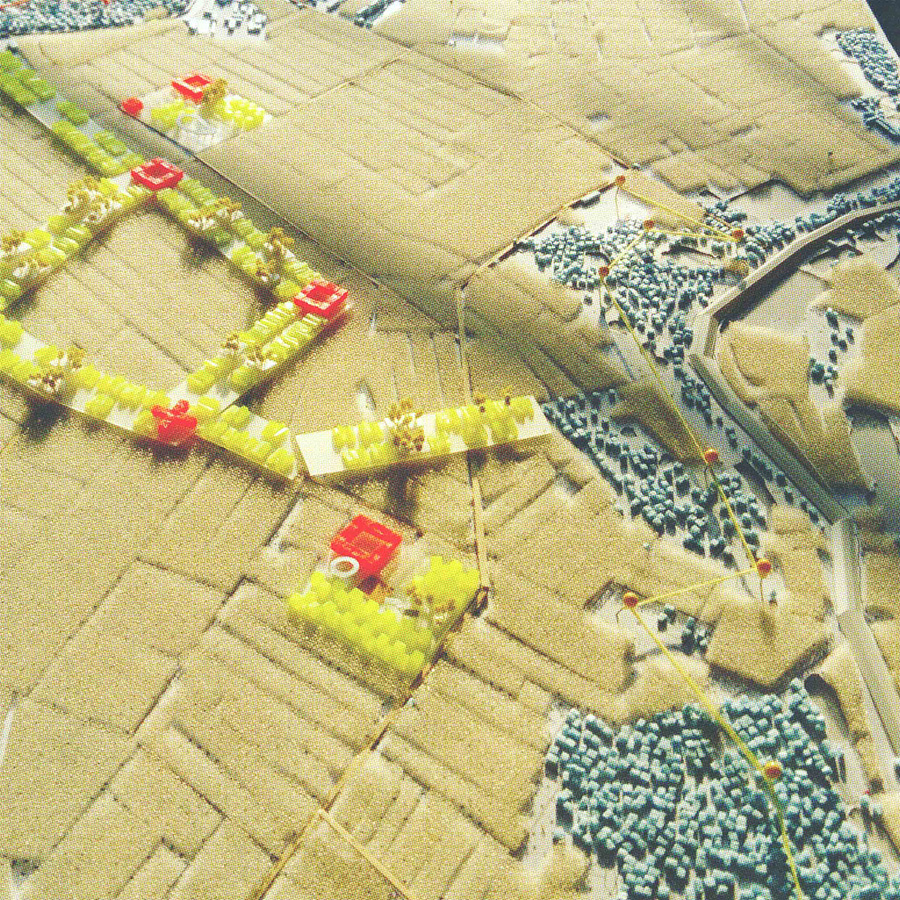
model of Hanoi’s village clusters and rural fields
following, the archipelago is an underutilized land on which the state has carried out mono-functional projects that will be redesigned as a mixed zone. this area will combine housing, utilities, shared infrastructure that support the cluster of villages, appropriate existing industrial shelters to transform into agro-food workshops, establish an export center, a local market, an organic producer waste treatment center energy resources, resting places, agricultural, artisanal cooperatives, collective housing and tourist services.
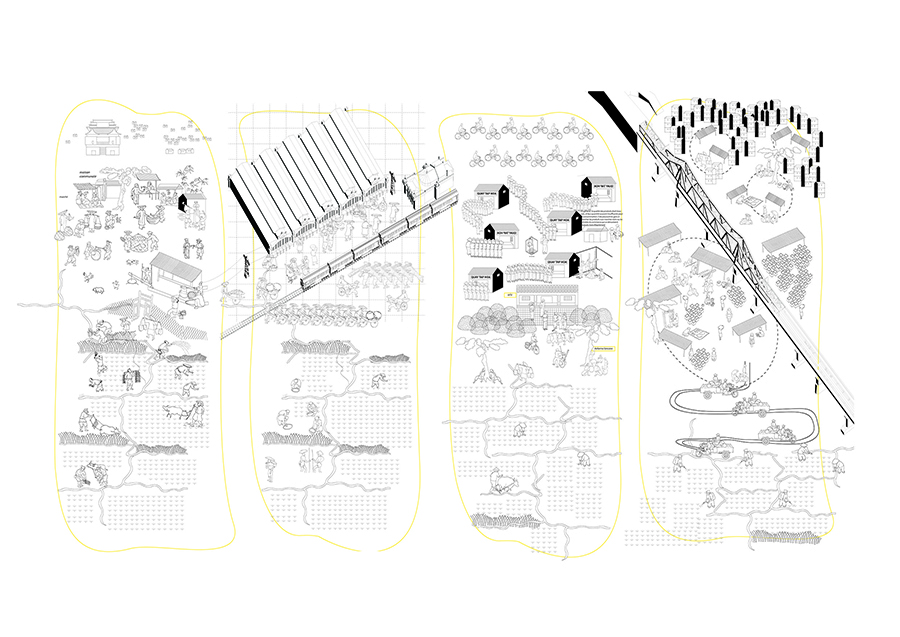 the relationship between production and consumption throughout history
the relationship between production and consumption throughout history
in addition, the skeleton is a linear housing block which placed in the middle of agricultural lands. these bands of houses also link the villages. therefore, they will welcome the residential growth of each village as well as the city of hanoi. as a result, this device will restore proximity between producers and consumers, a tool to restore the notion of trust, common good.
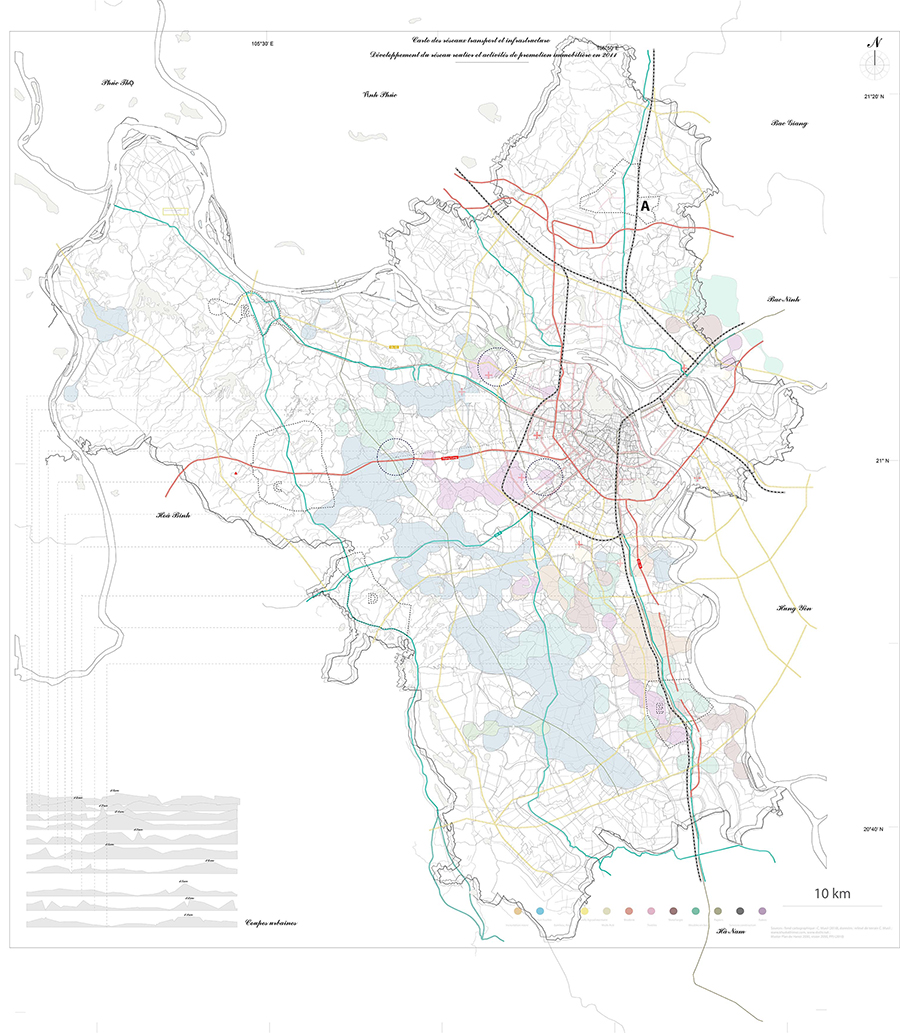
map of great hanoi
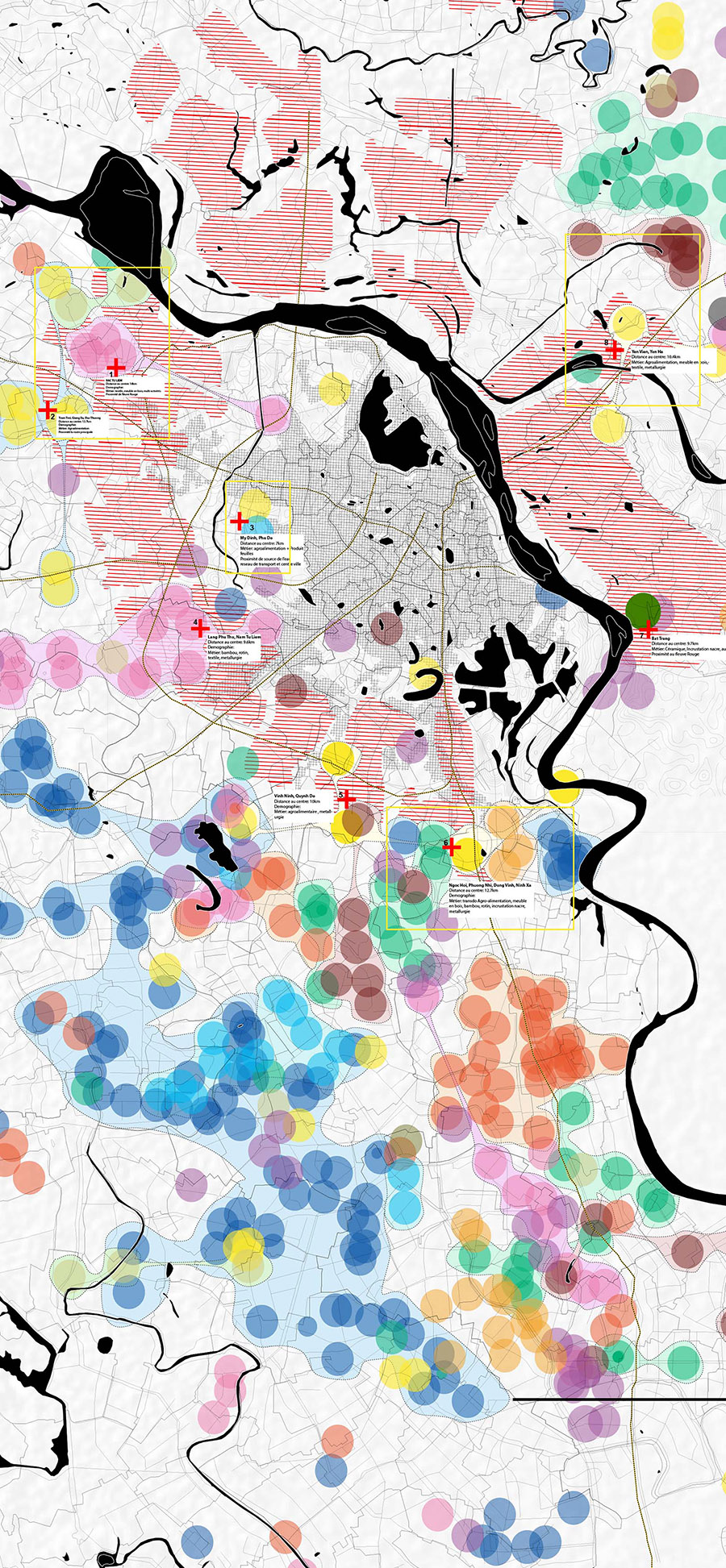
craft village cluster

north tu liem — agricultural zone
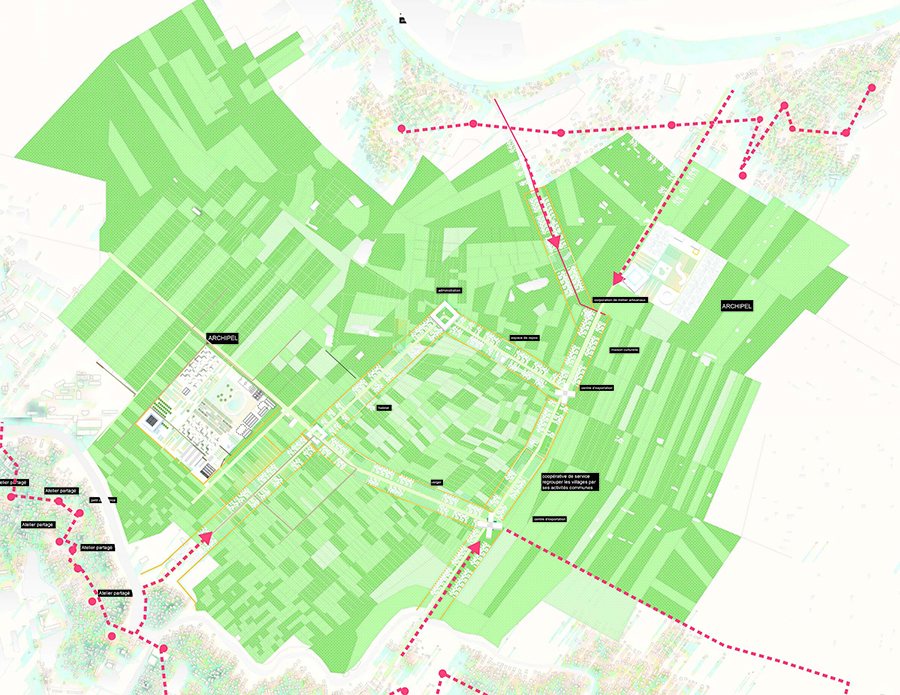
the master plan of the project
designboom has received this project from our ‘DIY submissions‘ feature, where we welcome our readers to submit their own work for publication. see more project submissions from our readers here.
edited by: apostolos costarangos | designboom
